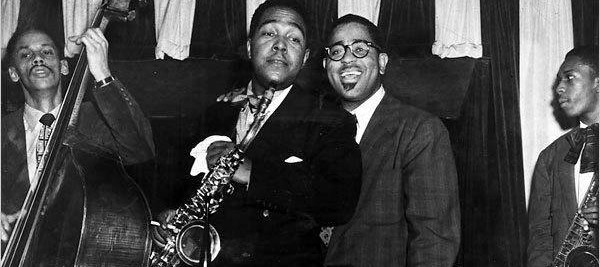“John Coltrane and Charlie Parker, their technique was phenomenal, but that music was never heartfelt for me, so, when I went out and gigged, it wasn’t anything that I wanted to emulate.” So said Kenneth Gorelick, the much-beloved, and much-maligned, saxophonist known as Kenny G, who is the best-selling instrumentalist in history.
An engrossing new documentary by director Penny Lane called Listening to Kenny G uses extensive interviews to examine both Kenny G’s music and the common antipathy to the music.

Kenny G image from new documentary
Gorelick is not kidding when he says he has not taken the jazz tradition seriously. One candid moment in the film shows him struggling to identify a portrait of Thelonious Monk, the enigmatic and unmistakable pianist who occupies enormous space in both the artistic development and the lore of the music. Gorelick’s lack of knowledge of his chosen profession’s story and tradition stands in direct contrast to how the tradition works — perhaps to how any tradition works. To take up any artistic discipline requires study under the greats of that tradition. In jazz, that means always returning to the recorded testimony, as well as to the trials of live performance, on a bandstand, under the pressure of fast tempos and complex chords.
The jazz world is famously aristocratic. Everyone who becomes a master of the genre studies under other musicians who have refined their craft to the highest level. Coltrane apprenticed, briefly but with great impact, with Monk. Those, like Coltrane, who push beyond the conventional boundaries of the craft, or reject those boundaries altogether, do so because they have mastered its conventions and standards and choose to reject them in pursuit of other sounds or styles. But iconoclasm without technical and artistic mastery is just cheap.
I am a saxophonist and long-time performer in the jazz tradition. Since I “have a dog in the fight” here, I tried to suspend judgment while I watched Lane’s film. “Give him a chance,” I told myself. And I tried, but Gorelick doesn’t exactly help himself. He comes across as irrationally confident and willfully naïve.
“Iconoclasm without technical and artistic mastery is just cheap.”
While watching the film, I thought of those colleagues and teachers with whom I’ve worked who are brilliant musical minds but struggle to make a consistent living. They are world-class at something the world doesn’t value very much, not in material terms anyway. In contrast, Kenny G has made millions and millions of dollars doing something that, by the standards of the discipline, he is not very good at.
This being the United States, race is always on the table. And midway through the film, Lane broaches the subject. Has the ‘G Man’ considered that his reception in American music may have been made a little easier because he is white, Lane asks.

Kenny G
“I’ve never put any thought into the color of my skin,” the G Man responds.
And then in just a few seconds, you can see things click. Yes, he says, his white privilege probably did make his acceptance in the pop music world a bit easier, probably opened a few doors and a few ears for him that would not have been opened otherwise. His whiteness probably landed him on the far-more lucrative pop charts, rather than the compartmentalized R&B charts. But Gorelick shows little indication that he has reckoned at any depth with how race had been, and still is, working.
That’s a troubling statement for someone who has made a living with a craft derived from the traditions of Black American music.
You can trace the music to enslaved African peoples in Congo Square, New Orleans, where drumming and dancing in a public square was as close to liberation as most of them would ever taste. The icons of Black American music, descending from those ancestors, honed their craft in the heat of racial terror and oppression, in segregated neighborhoods and nightclubs and concert halls.
They were not musicians without context. They were Black in America, and there is no way of talking or thinking about the music without acknowledging that undeniable fact. There is no honest participation in the tradition without reckoning with the story of the music.
“He draws from a deep tradition of Black music without really contributing much back to the form.”
Jason King, a Black musician and writer, comments in the film on Gorelick’s racial ignorance: “He draws from a deep tradition of Black music without really contributing much back to the form.” That connects Gorelick to a long and troubling history “where Black artists innovate and then white artists come along and stylize, and then receive greater financial remuneration.”
Kenny G reminded me of a recent interview I conducted as part of a larger project I’m working on. I’m writing a religious history of Urban Renewal in my city. As a white minister, I’m keeping a focus on my own people — how white churches and their members participated in those projects that displaced thousands of Black families in Charlotte, and all of their businesses and institutions, churches included. White churches and white Christians profited from renewal projects, profits that began 60 years ago but continue accumulating today. They — or really, we — have avoided the needed reckoning that our history demands.
Now a few white churches have a lot of prime real estate, a gain achieved by the destruction and removal of Black churches and businesses and families. I asked several white pastors about that and what we might do about a history that demands a fresh accounting.
“Well, one day we’re all going to be in heaven, and it’s not going to matter what color we were,” one of those pastors said. “We’re going to worship around that throne together.”
Like the G Man, he had not grappled with the tradition and his place in it yet. Instead, he heard some syrupy, sappy song. The music in his head was cheap. It was also, at least within certain groups, popular, a siren’s song that could ease racial discomfort before it even had the chance to begin.
The traditions that we form our lives around have to offer us something thicker than the curated forgetfulness of Christianity merged with whiteness, or of music that won’t engage its social context. Coltrane offers a thicker discipleship, as do the psalmists, sometimes plumbing the depths of grief, and sometimes soaring in ecstasy, always wrestling with the material realities of the world. Those are the kinds of songs that might lead us into the world to come.

Greg Jarrell
Greg Jarrell spends his days playing, working and conspiring with the family of disciples at QC Family Tree in Charlotte, N.C. His latest book is A Riff of Love: Notes on Community and Belonging.
Related articles:
How will you use your privilege? | Opinion by Mark Wingfield
Is there a balm in singing the spirituals, and if so, who should sing them? | Analysis by Rick Pidcock

